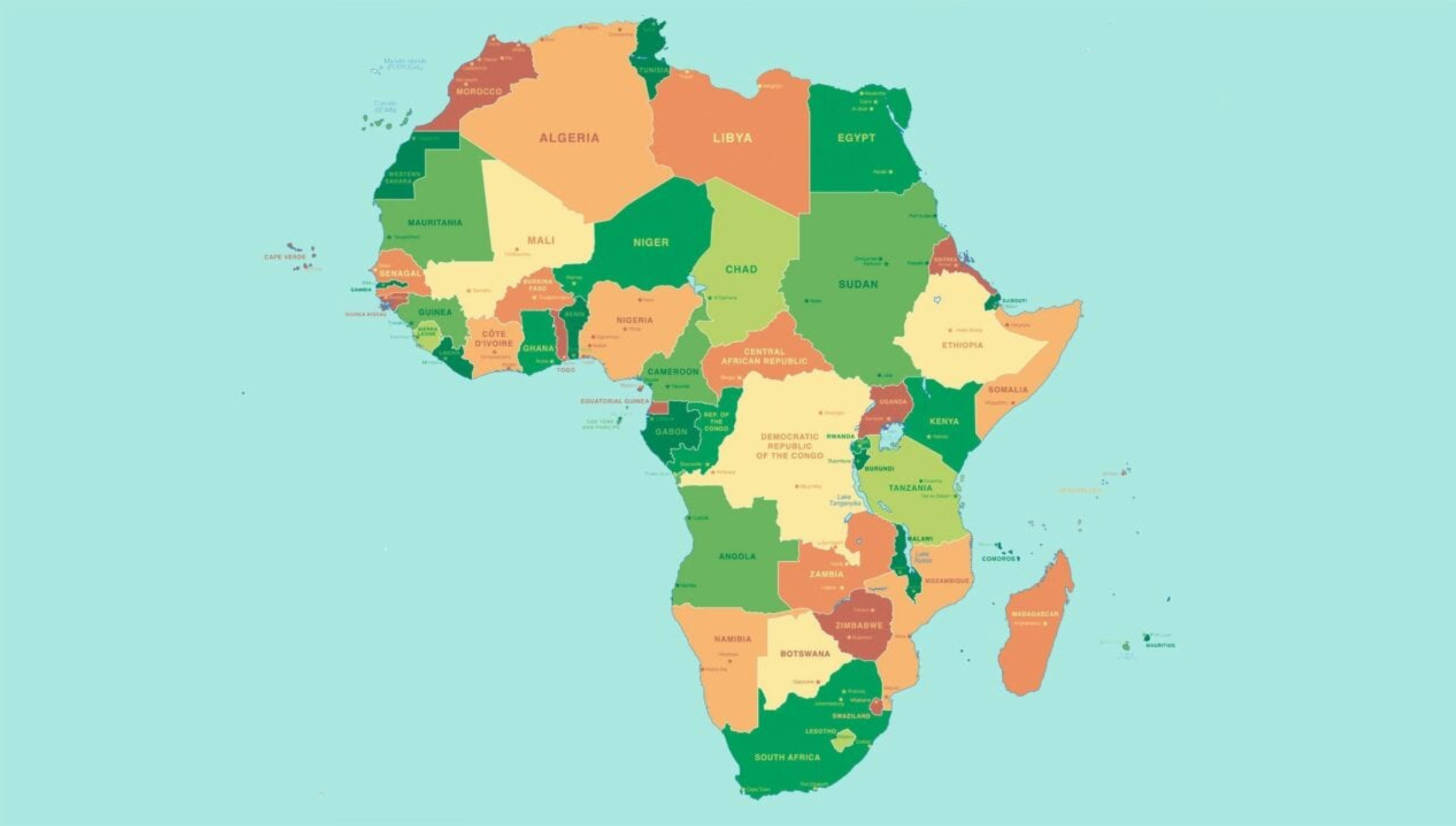
How (and why) do you see Africa?
Note: Text written by Karoline Tubben - kvstubben@gmail.com
The first – and oldest – answer attributes responsibility to colonialism. It is undeniable that four centuries of violent economic, epistemological and cultural domination have institutionalized both material and immaterial effects to this day. The effectiveness of colonialism as a model of material and discursive exploitation was due to its dynamism, that is, the process of European colonization of Africa involved the institutions of the time, from governmental protagonism through the endorsement of the church and science to the enjoyment of the Marketplace. However, the cat jump of this model was in the system of narratives constructed to justify the genocides and epistemicides carried out by the colonizers, removing from the colonized peoples any type of agency (MUDIMBE, 1988). For most of us, when we think of Africa, some words come to mind like: war; hunger and poverty. Also some stereotypical striking images we saw in some newspaper headline or going viral on Facebook of kids with prominent ribs or favelas in worse conditions than Rio de Janeiro. We would probably be surprised if we faced the reality that Africa – which is not a large block of land, but a continent composed of 54 States – is much more than what our collective imagination allows us to consider. Rwanda is an example of gender equality in the political environment ; Nigeria is home to the second largest film industry in the world , Ethiopia's economy is growing faster than China's, and Tunisia's is more complex than Brazil's and Russia's . But why then nobody - But why do very few people know or have access to these facts?
Some might refute this argument by pointing out that most African states gained their independence since 1960, so they had enough time to unchain themselves from the shackles that colonialism held them for so long. However, many of the rhetorics that served as pillars of the perpetuation of colonialism are still valid and vibrant around us, an example is the famous white savior complex. In the early days of European colonization in Africa, the exploration of the world beyond the Mediterranean was subsidized by the idea that whites had a mission and a divine duty to spread civilization around the globe using all means necessary to do so. Thus, only by adapting to Eurocentricity, that is, by adhering to the cultural, social and economic values of Europeans, would Africans be “saved”.
This narrative may seem absurd in the 21st century – although it shouldn’t be considering the recent episodes that exposed the latent racism of international society, such as the example of the murder of George Floyd in the United States –, but it is one of the foundations of the phenomenon known as Afropessimism. This neoliberal remodeling of the African continent's rhetoric as incapable of self-government flourished from the 1980s onwards, a milestone in the international economy, especially for developing regions such as Latin America and Africa – the lost decade. The Afro-pessimist narrative saw in the dissolution of optimism brought by the wave of decolonization in the 1960s by the economic crisis the perfect context to perpetuate the idea that the new States were condemned to always be in need of help from the Global North. The absence of liberal democracy – a standard governmental model in Europe and the United States – was pointed out as a justification for the apparent failure of African social progress, in addition to organizations such as the International Monetary Fund (IMF) and World Bank, which criticized the economic model of the continent centered on the State – contrary to the US and European pattern (B'BÉRI, LOUW, 2011).
Furthermore, the ingenuity – or cruelty – of colonialism lies in its ability to adapt to the constant social reforms that international society is undergoing. In this sense, it is possible to identify the white savior complex clearly acting in the photos we see of friends or, more often, celebrities posing with African children on Instagram. When these people post writing at length about how these children's struggles and journeys inspire them to be more grateful and compassionate about their own lives, the children lose any possibility of agency. They are objectified and turned into a background for the process of self-knowledge and development of the person who took the photo – probably without the permission of the child or a guardian in the first place (BAKAR, 2019).
Furthermore, the white savior complex is present in the constant debate that the world needs to be saved. Don't get me wrong, there is a lot to change in the world we live in, starting with structural racism, the gender inequality that kills women every day and the generalized lack of interest in the climate change agenda, however, we need to put a little more effort to analyze how these changes will happen. At the core of the idea that underdeveloped or developing countries – a notion to be questioned in its own right – need help to achieve progress, for example, whether from an individual donation or the intervention of an international organization, is the notion that these people remain incapable. This happens because we usually start from the assumption that the other – in this case, Africa – needs help, but we do not consult it, repeating the cycle of withdrawal of agency from these peoples. Do we even consider that the other we deem in need might have an opinion about their status quo ? Do we wonder why we tend to judge that we know what's best for each other better than they do? (COLE, 2012).
Another contemporary instrument for the perpetuation of colonialism is the media, more specifically, the production of content called “pornography of poverty”. The term, coined by Jorgen Lissner in 1981, has since been used to designate advertisements aimed at aid campaigns for developing countries that used to market the suffering of these communities, objectifying it for the simple – and cheap – media value. The big issue behind these videos that continue to be produced and shared is that they do not offer the viewer any kind of context of the alleged tragedy that is being exposed or of the people affected by it, although they have the important objective of raising public awareness of situations that are not we tend to pay attention to ourselves (HIRSH, 2017).
Thus, these campaigns, rather than instigating empathy, contribute to deepening the institutionalization of the colonial division of the “self” and the “other”. The one who watches (the white “I”) is the holder of resources and benevolence, while the one subjected to the scrutiny of the camera (the black “other”) is the one in need of help (HIRSH, 2017). Still, this type of narrative, such as the pornography of misery, has contributed to the expansion of Afropessimism beyond the 1980s, making Africa, in common sense, a hopeless place, condemned to bad governments and even worse economies, where black people he is a constant victim of his own inability to conform to Eurocentric norms and values (B'BÉRI, LOUW, 2011).
It is important to emphasize that yes, Africa lives with a series of problems such as hunger, terrorist groups, authoritarian governments, corruption and police brutality, among others, however, its population is not inert and passive as colonial thinking forces us to see it. . These citizens protest, march for their rights, make revolutions, conquer independence, just like any other European or American society. Contrary to colonial discourse, Africa has a voice and it screams, although the system is designed to silence it (COLE, 2012).
That said, narratives are complex and, under no circumstances neutral, – not even this post written by a white author –, summarizing a debate as vast as this one in so few words is problematic and perhaps simplistic, however, it is essential that we start looking more diverse narratives. In the first place, it is necessary to respect the agency of African peoples, understanding that even their ills are affected – even caused – as a result of a global policy. Furthermore, to understand that Africa is more than a stereotype, just as Brazil is not just carnival, corruption and football, it is necessary to look beyond what Chimamanda Adichie (2009) calls a single story . Seeking to read African authors, accessing non-Western news portals or investigating the context of the scenes shown in videos on social networks - which countries inject money into wars that move us, for example - can be a good start.
REFERENCES
BAKAR, Faima. What is a white savior complex? METRO News. 2019. Available at: https://metro.co.uk/2019/03/06/what-is-a-white-saviour-complex-8793979/ Accessed on: 4 Dec. 2021.
B'BERI, Boulou Ebanda de, LOUW, P. Eric. Afropessimism: a genealogy of discourse. Critical Arts: South-North Cultural and Media Studies . 2011. Available at: https://www.tandfonline.com/doi/abs/10.1080/02560046.2011.615118. Accessed on: 4 Dec. 2021.
COLE, Teju. The White-Savior Industrial Complex . The Atlantic. 2019. Available at: https://www.theatlantic.com/international/archive/2012/03/the-white-savior-industrial-complex/254843/ Accessed on: 4 Dec. 2021.
HIRSCH, Afua. Ed Sheeran means well but this poverty porn has to stop . The Guardian. 2017. Available at: https://www.theguardian.com/commentisfree/2017/dec/05/ed-sheeran-poverty-porn-activism-aid-yemen-liberia Accessed: 4 Dec. 2021.
MUDIMBE, Valentin-Yves. The invention of Africa . 1988. Indiana University Press. Available at: https://libcom.org/files/zz_v._y._mudimbe_the_invention_of_africa_gnosis_pbook4you_1.pdf . Accessed on: 5 Dec. 2021.


